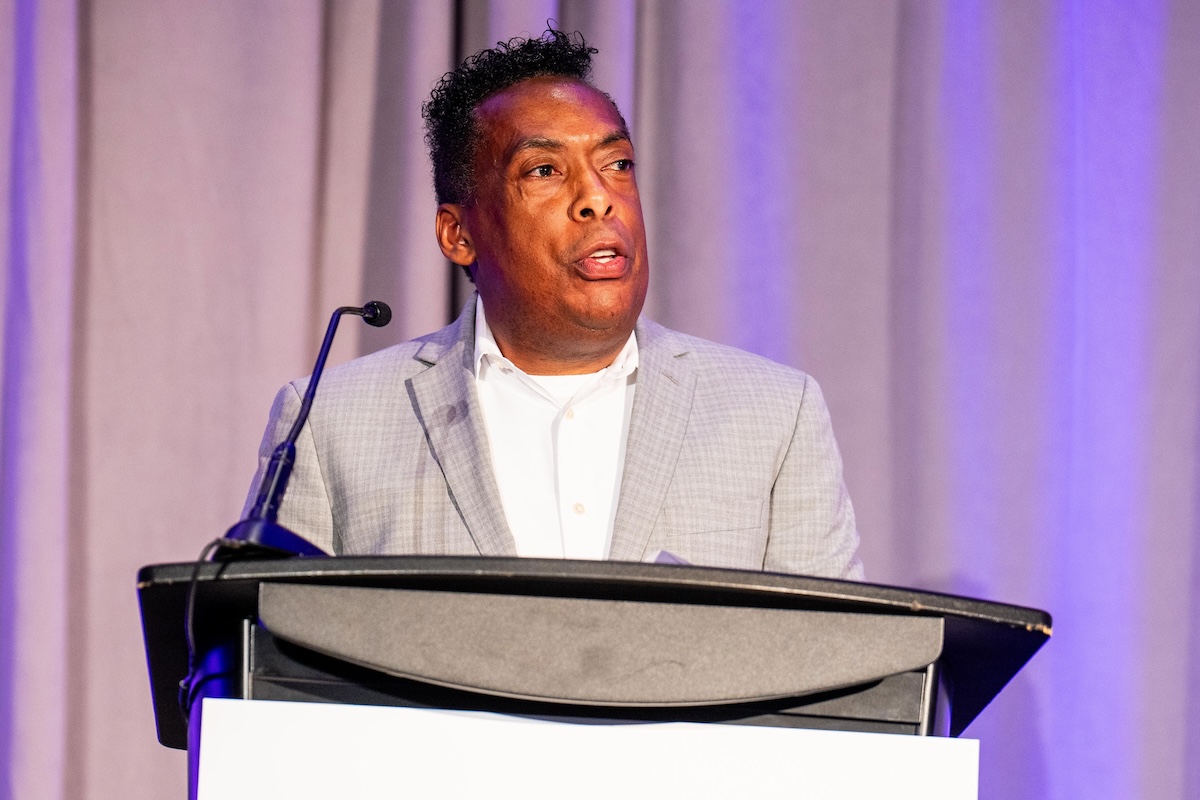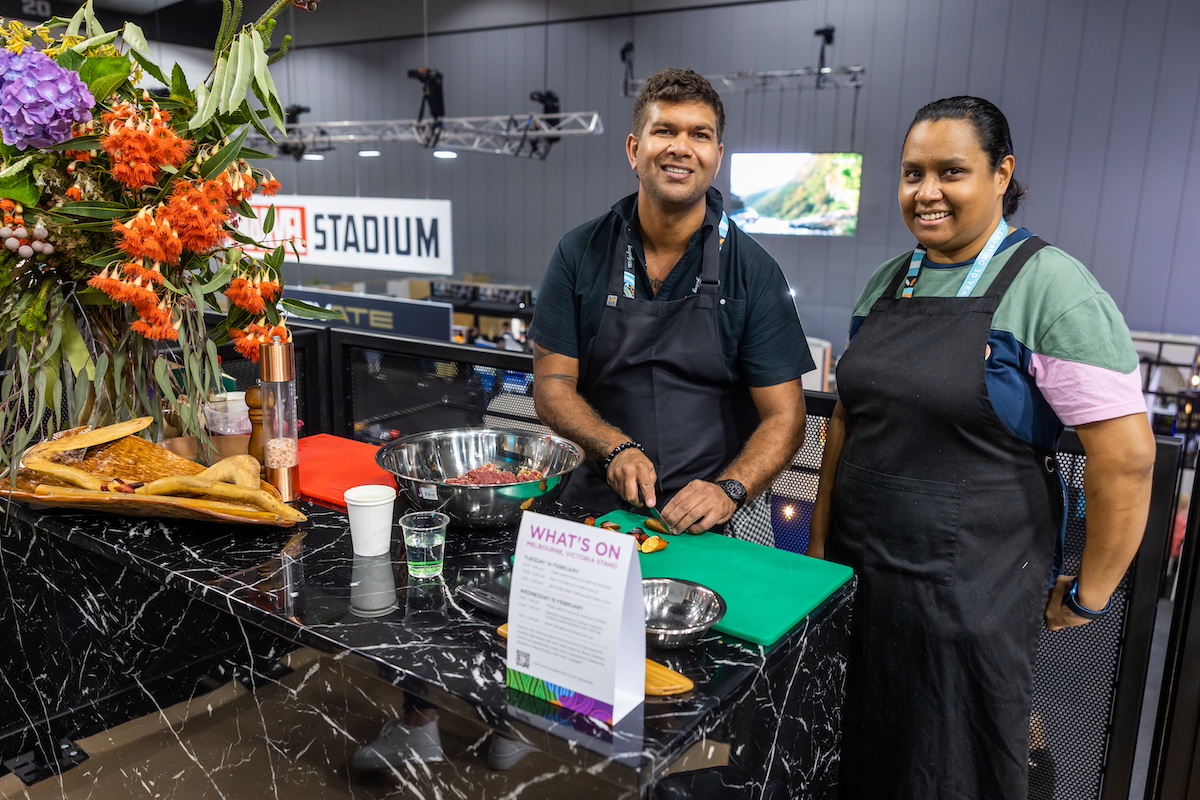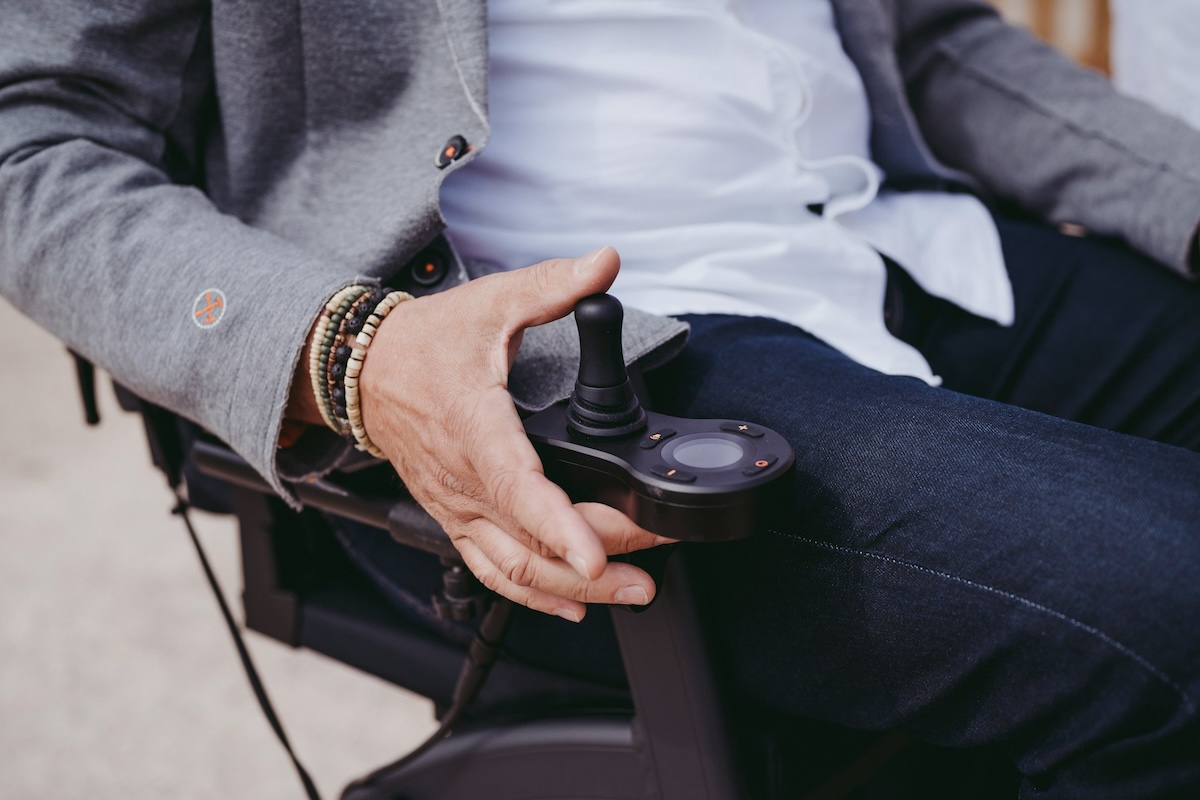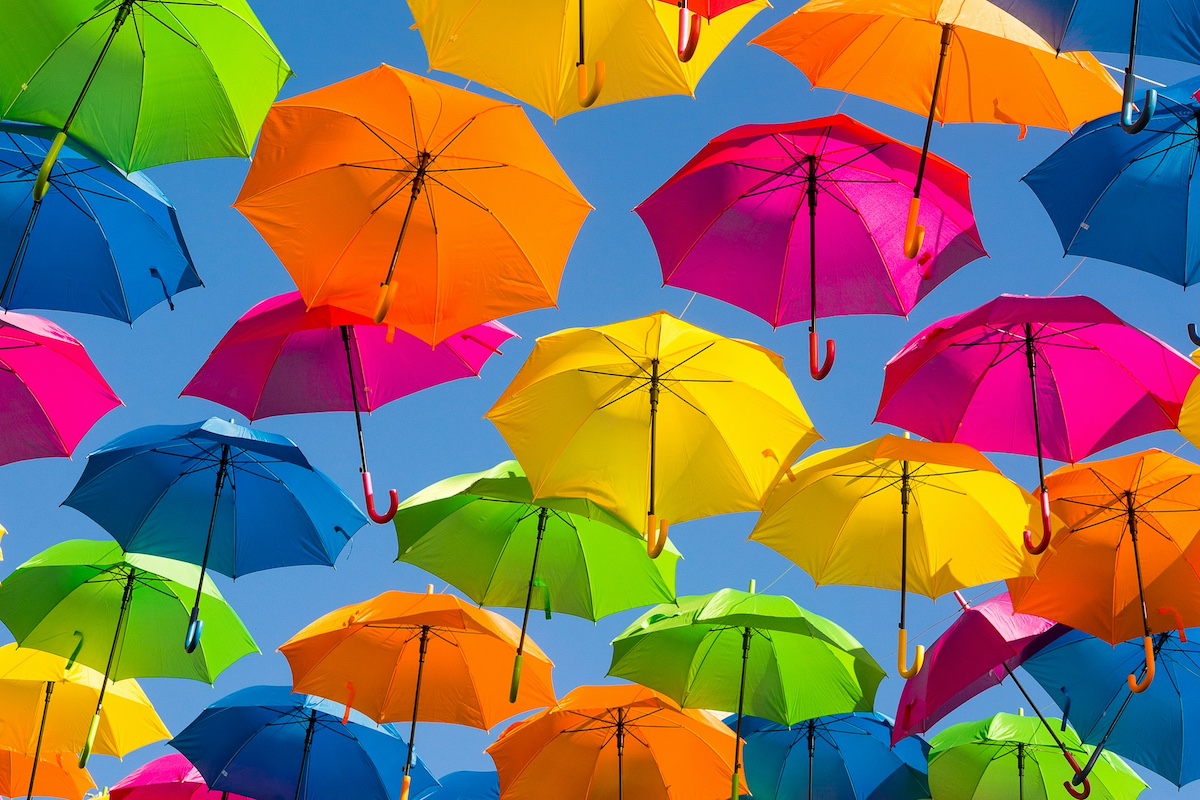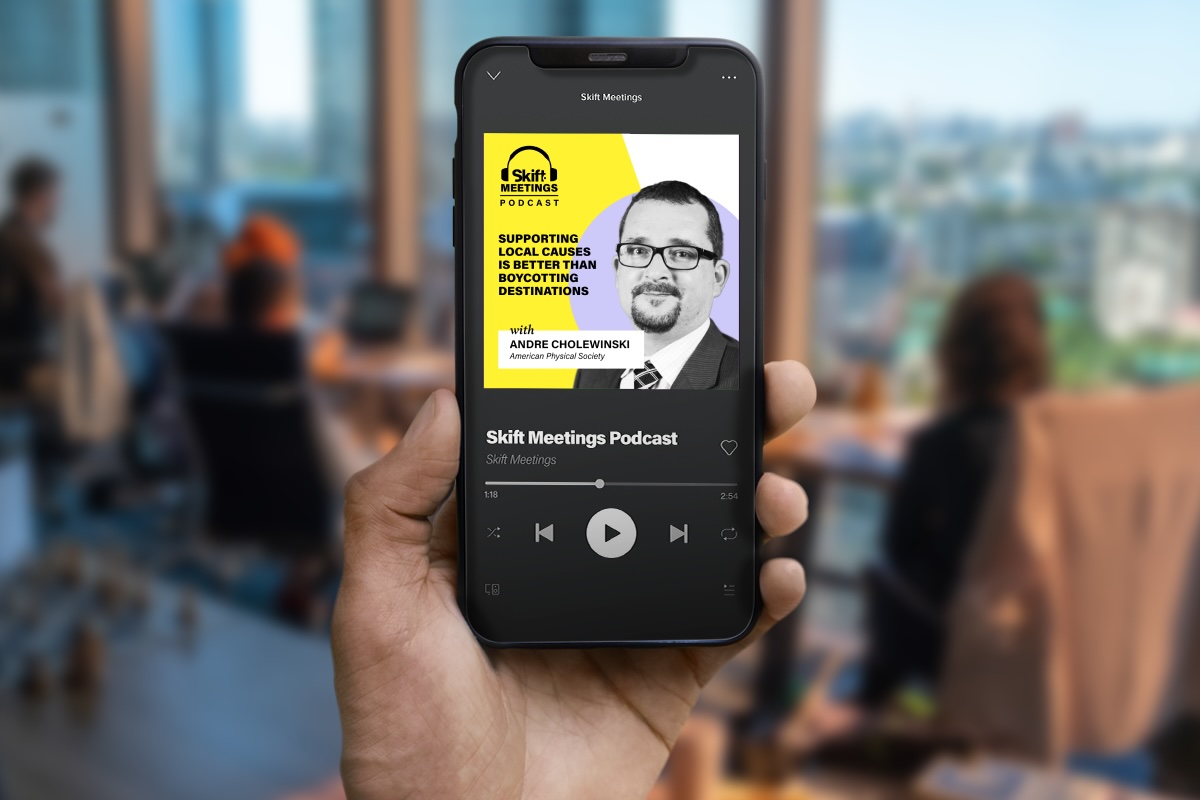Skift Take
While anti-Asian bigotry in the U.S. is nothing new, it has become increasingly frequent, violent, and visible since the pandemic began. It’s up to meeting and event organizers to ensure that their Asian Americans, Native Hawaiian and Pacific Islander attendees, staff, exhibitors, vendors, and hospitality partners are, at a minimum, safe from the rising wave of hate, bigotry, and violence while at events.
Meeting and event professionals are nothing if not risk management-obsessed, from making sure every power cord is taped down to prevent tripping hazards to developing extensive codes of conduct to make sure no one is harassed, bullied, or worse over the course of the event. Many even have developed detailed diversity, equity and inclusion (DEI) programs to ensure that people of all races, colors, cultures, gender identities and religions feel safe and included.
But Asian American/Native Hawaiian/Pacific Islander (AANHPI) attendees, sponsors, vendors, and hospitality workers somehow seem to fly under this due diligence radar screen when it comes to combatting racist-related hate and violence. “When there is news about API hate or safety, it gets ignored,” said Jenny Ng, CMP, event planning senior manager with National Co+op Grocers. “We should also be part of DEI conversations.”
Asian Hate and Violence Gaining Visibility
The need to include AANHPIs in DEI programs is becoming more difficult to ignore as hate crimes and violence aimed at members of the AANHPI community have gained visibility over the past few years — including the gruesome murder of six women of Asian descent who were among the eight victims at Atlanta-area spas in March 2021.
The COVID-19 pandemic also has exacerbated the issues facing this community. Geographic blame for the origin of the disease quickly turned many urban Chinatowns into ghost towns early in the pandemic. Reports of increased hate, verbal abuse and physical violence also have become more prevalent against everyday citizens — including those who work in the hotels, convention centers, restaurants, and other establishments that serve meetings and events, as well as attendees, exhibitors, sponsors, and staff at the events.
According to Stop AAPI Hate, there were more than 11,400 reported anti-Asian incidents between March 2020 and March 2021. In addition, hate crimes against Asian Americans rose 339 percent between 2020 and 2021, according to a report by the Center for the Study of Hate and Extremism. However, the stats that are available still tend to be “ridiculously underreported,” said Culture Explorer and Show Host Jolene Jang, who keeps a running list of hate crimes against AANHPI people that is depressingly long.
“The pandemic and its related violent attacks showcased what the members of the API community endure,” said Charlene Liu, CMP, DMCP, director, meetings and events, Higher Education User Group (HEUG). “These unprovoked cases of violent aggressions towards our most vulnerable members only verified that we, most definitely, are a targeted minority group and subject to victimization.”
Why Are AANHPIs Left Out of the DEI Discussion?
While some DEI programs generically include AANHPI, they tend to emphasize the Black, Hispanic/Black American, and LGBTQ+ communities. Liu cites as examples social media and/or events highlighting Black History, Pride, and Hispanic Heritage month, which are important, “but no mentions of Asian Pacific Heritage Month or Lunar New Year, etc. Improvement is certainly needed in this arena and for our meetings.”
Like the African American, Latino and Hispanic and other minority communities in the U.S., the AANHPI community is a diverse one that represents people from dozens of countries, all with their own languages, traditions, cultures, and religions. And there are generational issues as well, from those who are newly arrived in the U.S. for whom English is a second language to those whose families have been here for generations and consider themselves to be more American culturally than anything else — but who still find themselves “othered” as non-Americans regularly because they don’t look like members of the U.S. mainstream white culture.
And yet AANHPI issues still tend to fly under the radar screen, even for meeting and event planners. “Media coverage in the United States relates to current trends and statistics,” Liu points out. “The BLM movement is deservingly justified in receiving prominent coverage because they’ve endured unimaginable transgressions that are rooted in this country’s history. I believe the American API story has not yet evolved out being categorized as immigration-related, much like being Hispanic/Latino and Jewish.”
Also, unlike the African American community, AANHPIs historically have not had high-visibility leaders/champions such as Martin Luther King has been for the African American civil rights movement. “The Asian cultural community just hasn’t had that level of representation or exposure to advocacy voices,” said Kevin Iwamoto, GLP, GTP, head of enterprise at event tech company Bizly. “We’re changing that, but it’s a work in progress.”
Another barrier could be that, as a whole, AANHPI cultures tend to encourage members to avoid calling attention to themselves or making waves, explains Iwamoto. “Asian cultures don’t do us any favors by maintaining a culture of silence, where you’re taught to blend in and be successful and not depend on anyone else.”
That’s now starting to change as members of this community are beginning to put their differences aside and coalesce and advocate for their rights — including the right to feel safe, included, and welcomed at meetings and events.
“It starts with awareness, education, and representation,” said Iwamoto.
Bringing AANHPI Challenges to the Forefront
The meetings and events community are already on it. Within the past year, John Chen, author of Engaging Virtual Meetings and the leader of Geoteaming, formed two social media groups to bring more awareness to challenges unique to AANHPIs in the meetings and events industry, provide information to educate others about those challenges, develop non-AANHPI allies who can help amplify the messages, and increase representation of AANHPI event professionals at the upper echelons of this industry. The mission of both the APIEventProfs LinkedIn group and the APIEventProfs Facebook group is to “educate and elevate the role of Asian Pacific Islanders in the meetings and event profession, including educating about the rise of API-related hate crimes and their impact on our industry.” Both welcome both AANHPI and non-AANHPI allies to the discussion.
Finding Solutions
Skift Meetings spoke with three members of the APIEventProfs social media groups — Iwamoto, Liu, and Ng — to learn more about the issues facing this community, as well as what event professionals can do to make their meetings safe, inclusive, and welcoming.
What are some of the concerns AANHPI attendees, sponsors, vendors, hospitality workers, and everyone else affiliated with events have when it comes to racist-related hate and violence?
“When it comes to any of my API stakeholders (internal and external), I always consider a variety of factors that cause concern: location, conference content, political climate, local climate, etc.,” said Liu.
“Any mix of these could produce a myriad of potential opportunities for race-related hate and violence,” she added. “Considering that events are where many gather, all of our stakeholders may experience a multitude of fears. Some of these may include passive aggressive commentary, segregation (e.g., purposely moving out of close proximity to API stakeholders), or even physical violence. These days there are no rules when it comes to experiencing hate and violence, and that seems to be the most frightening part of it all.”
Ng agrees that safety has to come first. “Without feeling safe, you can’t learn, you can’t network — you can’t do anything that you come to the meeting to do if you don’t feel safe,” she said.
“As a meeting planner, it is my responsibility to ensure that diversity is well represented in all areas of our meetings and events,” added Liu. “This would include support staff, speakers, attendees, and even my own team. We represent a global audience and should reflect ourselves as such. This representation of diversity would allow us to focus our planning on a more inclusive and open environment for everyone.”
What to Lookout For
“In my corporate planning realm, microaggressions and cultural misunderstandings are my main concern,” said Liu. “My team and I support a global membership of at least 35,000 people. Our goal is to ensure that all stakeholders feel welcome, safe, and secure when attending our events. Accessibility and cultural barriers will occur, but my goal is to significantly reduce these as much as possible.”
She said that key indicators that she personally has encountered are a lack of knowledge of cultural/religious practices, such as calls to prayer. She’s also experienced speakers making incendiary statements that were not reviewed prior to sessions and even sketchy entertainment selections (think geishas for a Japanese-themed event).
Ng said anti-AANHPI microaggressions are more common than you might want to think. She even has had people call her vulgar names and tell her to “go back where she came from” at a major meetings industry event. That’s why she always asks for a security escort when traveling from the venue to her car and back — “I always have to have an awareness of my surroundings.”
And watch out for discriminatory or just plain offensive language that denigrates Asian culture — one infamous example is when an attorney told USA Today about a colleague who referred to a Chinese company as “ching chong ching chong.” But it doesn’t even have to be that overt. Iwamoto said even well-meaning, chatty Uber drivers often try to break the ice with AANHPI passengers by asking where they’re from — with the assumption that they’re not American because they appear to be “other.”
Making AANHPI Attendees Feel Welcome, Included and Safe
Liu said, “I have found the best practice is to be inclusive in the decision-making and review process. Ensuring that a diverse team of individuals is specifically tasked with reviewing programs and content through the lens of accessibility and reducing barriers to understanding.”
For example, check the calendar to see if your event dates fall over important AANHPI cultural and religious holidays, such as Lunar New Year. “That would be a major improvement to the API stakeholder experience,” said Liu.
Ensuring that the conference is a safe space and communicating intentions to attendees would be essential, she added. “Acknowledgement of potential concerns and being prepared to address issues, providing resources, and maintaining that safe environment would be a great start. Not only would this show API attendees that they are welcome, but their concerns are being heard, considered, and cared for.”
Things to Consider
- Aligning with an AANHPI-centric organization to consult on the overall meeting and event experience, suggests Liu.
- Designating a page on the conference website that provides details of AANHPI resources and contacts (AAPI Equity Alliance)
- Researching the prevalence of anti-Asian hate crimes and violence in your site selection process. “I spend more time vetting when choosing destinations to make sure it will be safe for everyone,” said Ng.
- Having a safety preparedness plan for both staff and attendees and sharing it ahead of time.
- Asking a member of the AANHPI community to be on your planning committee — including sharing about their culture. “That can help break down some of the stereotypes,” said Ng.
- Asking the venue to share its DEI goals to ensure they align with those of your organization.
- Ensuring that AANHPI culture is represented in the event by weaving it into the catering, entertainment, and overall vendor selection. However, be mindful of avoiding stereotypes and cultural cliches (like the geishas at the Japanese-themed event or thinking you’re representing Asian culture by providing an “Asian” meal that’s a mishmash of foods from five different cultures without explaining the background and significance of each item to that culture).
- Avoiding the above by inviting the chef, caterer, entertainer, or other vendor to tell their stories and bring meaningful understanding of the cultural underpinnings of the food or entertainment. Ask them what one thing they would want people to know about the Lion Dance or Lunar New Year celebration or special dinner dish, suggests Asian Inclusivity Consultant Jolene Jang in a recent Better Events podcast. “There are so many opportunities to bring people together by using new vendors, suppliers, and partners,” added Ng.
- Avoiding “whitewashing,” or putting white people as the face of events, entertainment, or other activities rooted in AANHPI culture — in the podcast, Jang cited the recent movie Bullet, a Japanese story set in Japan that nonetheless stars non-Asian actor Brad Pitt. Similarly, be aware of cultural blind spots — for example, never bill an Asian female entertainer as “exotic,” something most would find offensive.
- Including AANHPI representatives as speakers. And invite them to speak in general topic sessions and on panels discussing whatever your group’s hot topics are — don’t invite them just to sit on the DEI panel and think you’ve checked the AANHPI piece of your DEI list.
- Asking emcees and others doing introductions to ensure they know how to correctly pronounce the name of the person being introduced. Even if the AANHPI person says, “Oh, just call me Steve,” ask if that’s really what they would prefer. As Jang explains in the podcast, “Understand that respect starts from your name. Most people may feel too embarrassed to speak up for themselves.” If it feels too hard or awkward to get it right, record it and practice until it becomes easy to say, she suggested. Don’t take up a bunch of time on stage trying and missing — that just makes it even more awkward.
- Including specific language around bigotry and anti-Asian hate in your Code of Conduct. “Make sure it’s continually refreshed,” advised Ng. “Keep looking through your policy to make sure it is inclusive and welcoming to everyone.” And have a point person named in that policy or code that people can go to if they are in a situation that makes them feel unsafe or uncomfortable.
- Follow through on your pledge to make your event a safe space. “Without follow through, all effort is moot,” said Liu.
Seeking Long-Term Solutions
How can the hospitality and meeting/event organizer community be a part of a more systemic solution to Asian-directed hate and violence in society at large?
Liu points out that meeting/event organizers wield quite a bit of buying power. “If it wasn’t evident already, with how much impact the economy took with the downturn of the hospitality industry, it is now,” she said. “With that financial influence and key partnerships with local partners, we have a ripe opportunity to enact change in the very community our meetings take place in. Establishing relationships with diversity-oriented organizations and including them as part of the planning process would bring incredible value to your organization, local partners, and direct/indirect stakeholders,” said Liu.
“As an industry that relies on partnerships to execute success, this is a natural avenue for us to be a part of the systemic solution,” she added. “Rely on the subject matter experts and let them guide us to a more tolerant and accepting environment in which we all would benefit.”
Iwamoto goes back to the three pillars: Awareness, education, and representation. “If you don’t point out the issues, if you don’t talk about them, how will people learn to be more culturally sensitive?” Meeting and event organizers — whether AANHPI or otherwise — have a lot of power to make change, both economically through their site selection and educationally through the content they share, he added. “You have the voice and the power to make change happen. You shouldn’t be afraid to use that voice and that power responsibly for the greater good.”
While it’s heartening to see more awareness being brought to Asian hate in the U.S., “I would like to see us at some point get to where we can celebrate the work we do, not just the depressing news about the hate we’re experiencing, even though that’s important,” said Ng. “It’s the other side of that same coin.”

